Let m1=1kg,m2=2kgandm3=3kg is figure. Find the acceleration of m1,m2andm3. The string from the upper pulley to m1 is 20 cm when the system is realeased from rest. How ong will it take before m1 strikes the pulley?
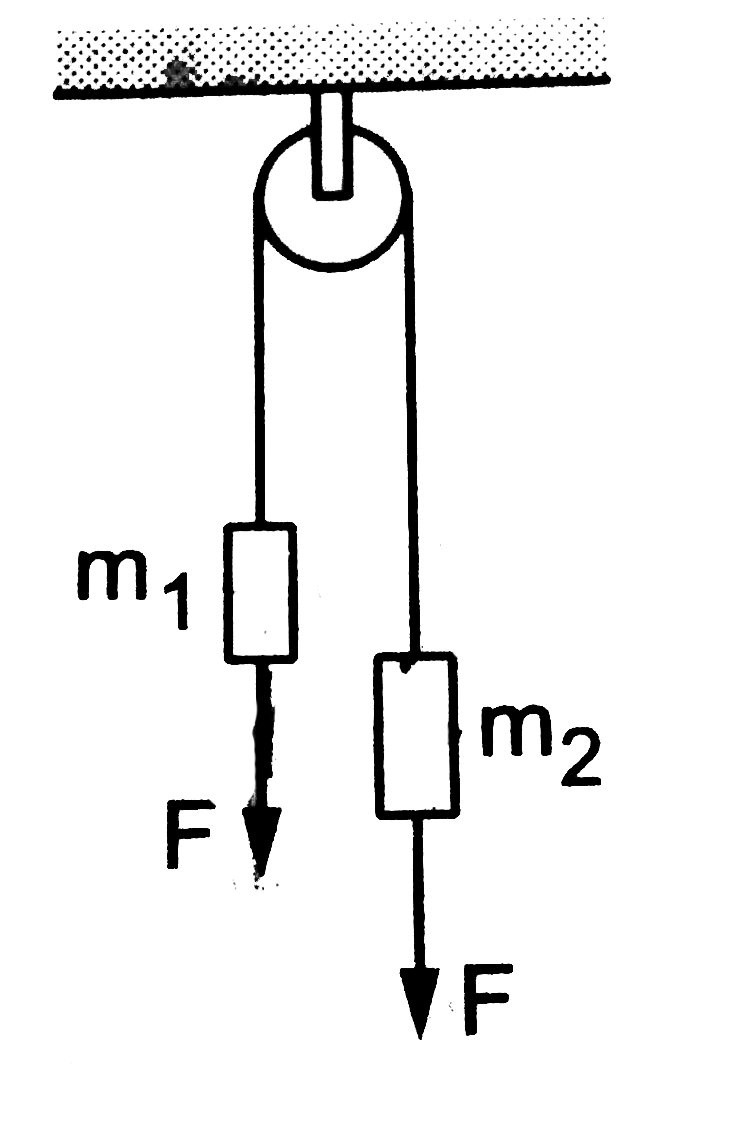
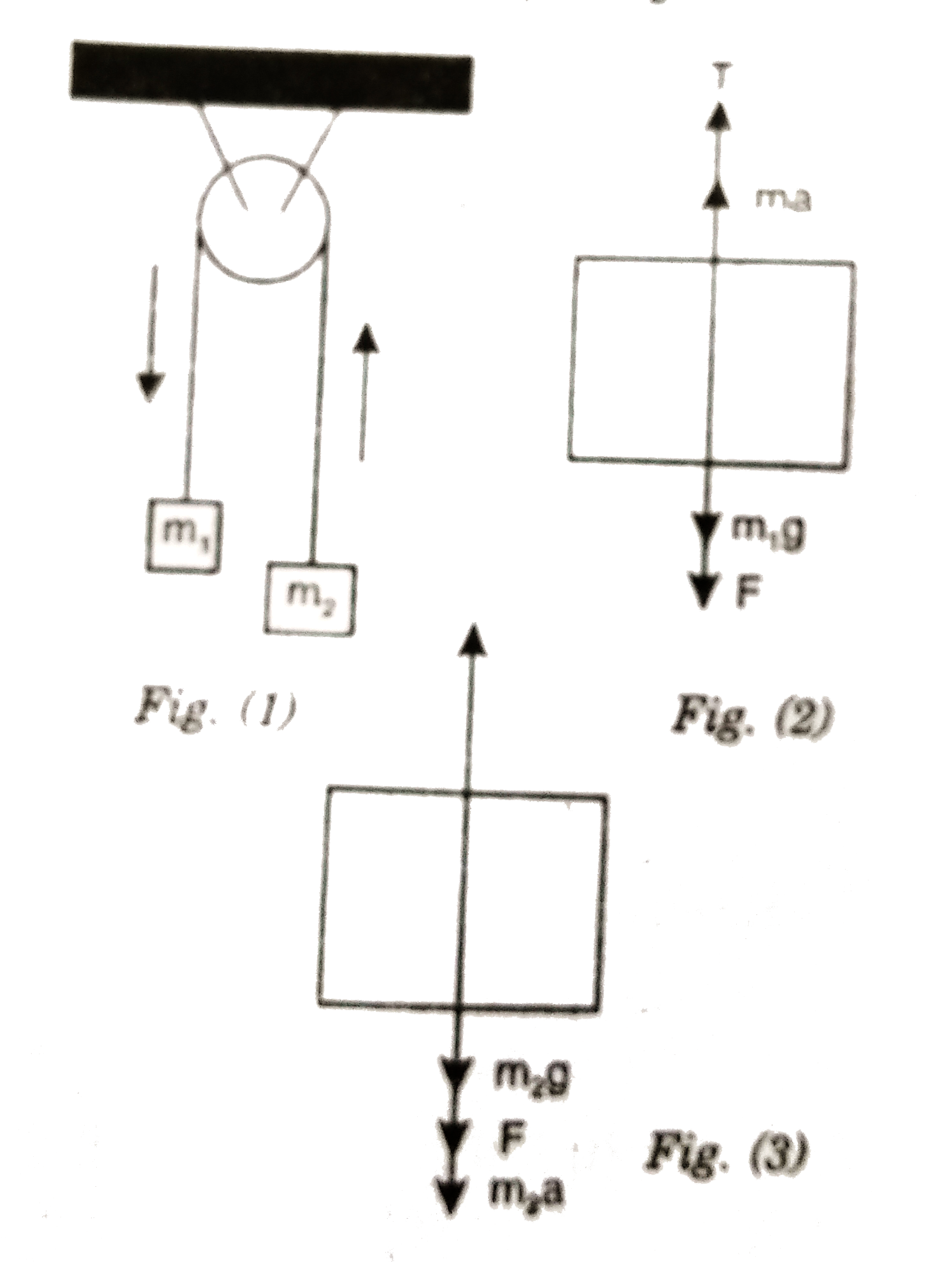
From the free body diagram (. 2),
T+m1a−(m1g+F)=0
→T=m1g+F−m1a
From the feree body diagram ( 3)
→T=m2g+F+m2a
→T=5g+1−5a ……..i. ltbr> →T=2g+1+2a
From equations i. and ii. we have
5g+1−5a=2g+1+2a
→3g−7a=0<br> rarr 7a=3g<br>rarra= (3g)/7=29.4/7<br>4.2 m/s^2 [g= 9.8 m/s^2]<br>Henceae≤rationofblockis4.2 m/s^2.<br>Afterthestr∈gbreaks,m_1movesdownwardwithforceFact∈gdownward,then,<br> m_1 a=f+m_1g<br>where, foerce = 1 N and<br>acceleration = 1/5 =0.2 m/s^2 <br>:. m_1 a=(1+5g)<br>So,acceleration = Force/ Mass<br> =(5(g+0.2))/5<br>=(g+0.2) m/s^2.
Topper's Solved these Questions
- NEWTON'S LAWS OF MOTIONBOOK - HC VERMACHAPTER - NEWTON'S LAWS OF MOTIONEXERCISE - Objective 2
9 Videos
- LAWS OF THERMODYNAMICSBOOK - HC VERMACHAPTER - LAWS OF THERMODYNAMICSEXERCISE - Short Answer
15 Videos
- PHYSICS AND MATHEMATICSBOOK - HC VERMACHAPTER - PHYSICS AND MATHEMATICSEXERCISE - Exercises
34 Videos
Similar Questions
Let m1=1kg, m2=2kg and m3=3kg in figure (5-E12).Find the accelerations of m1,m2 and m3 .The string from the upper pulley to m1 is 20cm when the system is released from rest.How long will it take before m1strikes the pulley?
View SolutionIn figure m1=5kg,m2=2kgandF=1N. Find the acceleration of either block. Describe the motion of m1 if th string breaks but F continues to act.

View Solution
Knowledge Check
If m1=10kg,m2=4kg,m3=2kg, the acceleration of system is
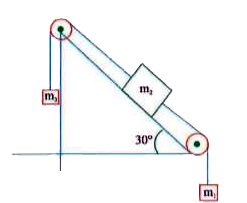 A5g/2B5g/3C5g/8D5g/14
A5g/2B5g/3C5g/8D5g/14If m1=10kg,m2=4kg,m3=2kg, the acceleration of system is
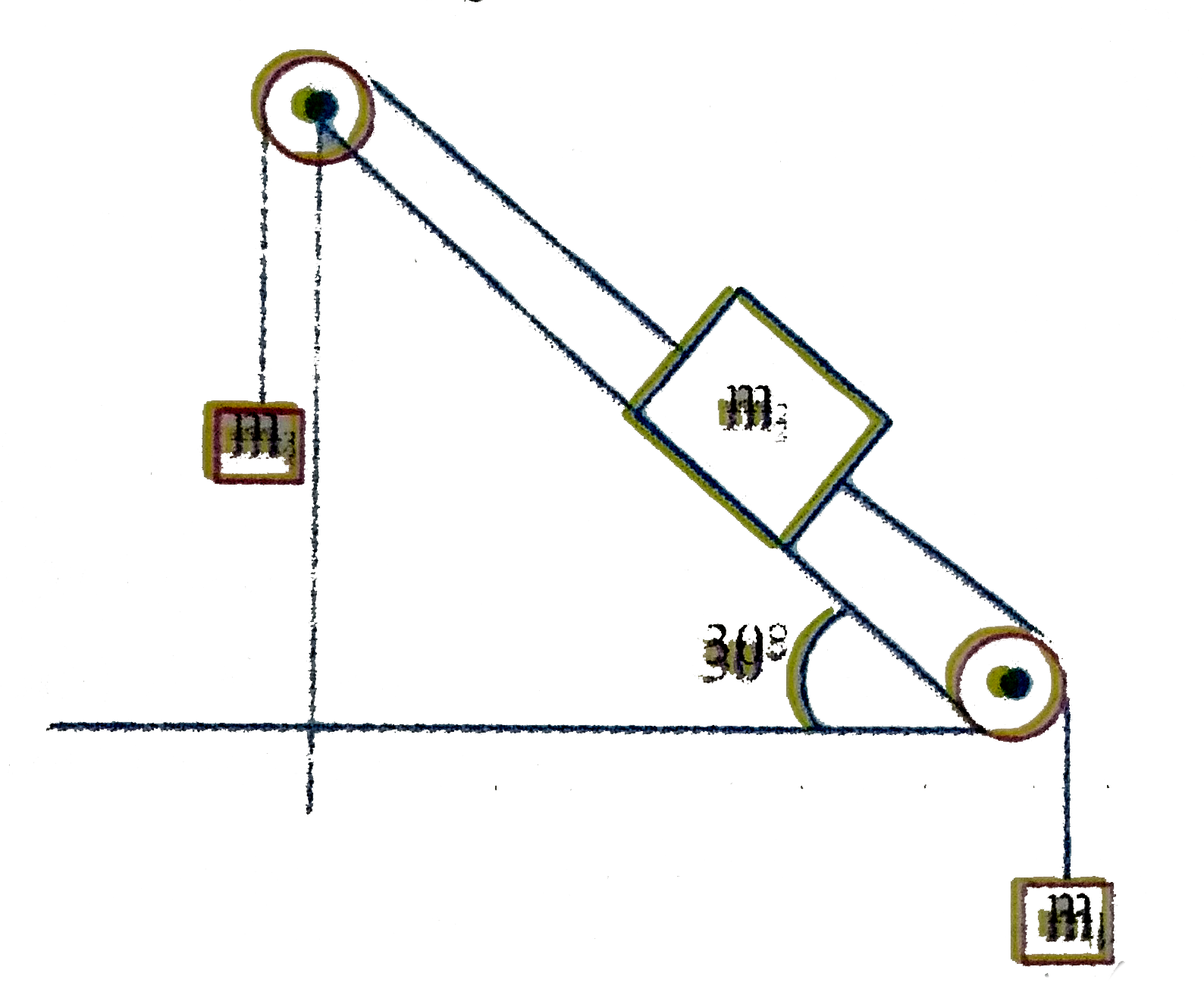 .A5g/2B5g/3C5g/8D5g/14
.A5g/2B5g/3C5g/8D5g/14For the given figure the acceleration of 1 kg block if string is massless and mass of pulley is 2 kg and diameter of pulley is 0.2 m :-
 A2m/s2B2.5m/s2C0.2m/s2D1m/s2
A2m/s2B2.5m/s2C0.2m/s2D1m/s2
In the fig. m2>m1. Pulley and string and massless and Pulley is smooth. The system is released from rest. After 2 seconds of motion m2 was held with the hand.
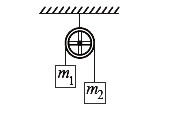
View SolutionThree masses m1,m2andm3 are attached to a string -pulley system as shown . All the three masses are held at rest and then released If m3 remains at rest , then
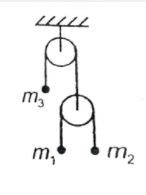
View SolutionTwo masses m1 kg and m2 kg passes over an atwoods machine. Find the ratio of masses m1 and m2 so that string passing over the pulley will just start slipping over its surface. The friction coefficient between the string and pulley surface is 0.2.
View SolutionThe masses of A,B and C in the figure (Fig. 5.24) are mA=4 kg, mB=2 kg and mC=3 kg. The mass of the movable pulley is 1 kg. Show that the acceleration of A is 9g49
View SolutionIn the pulley system shown here, find the relationship between acceleration of m1,m2 and m3
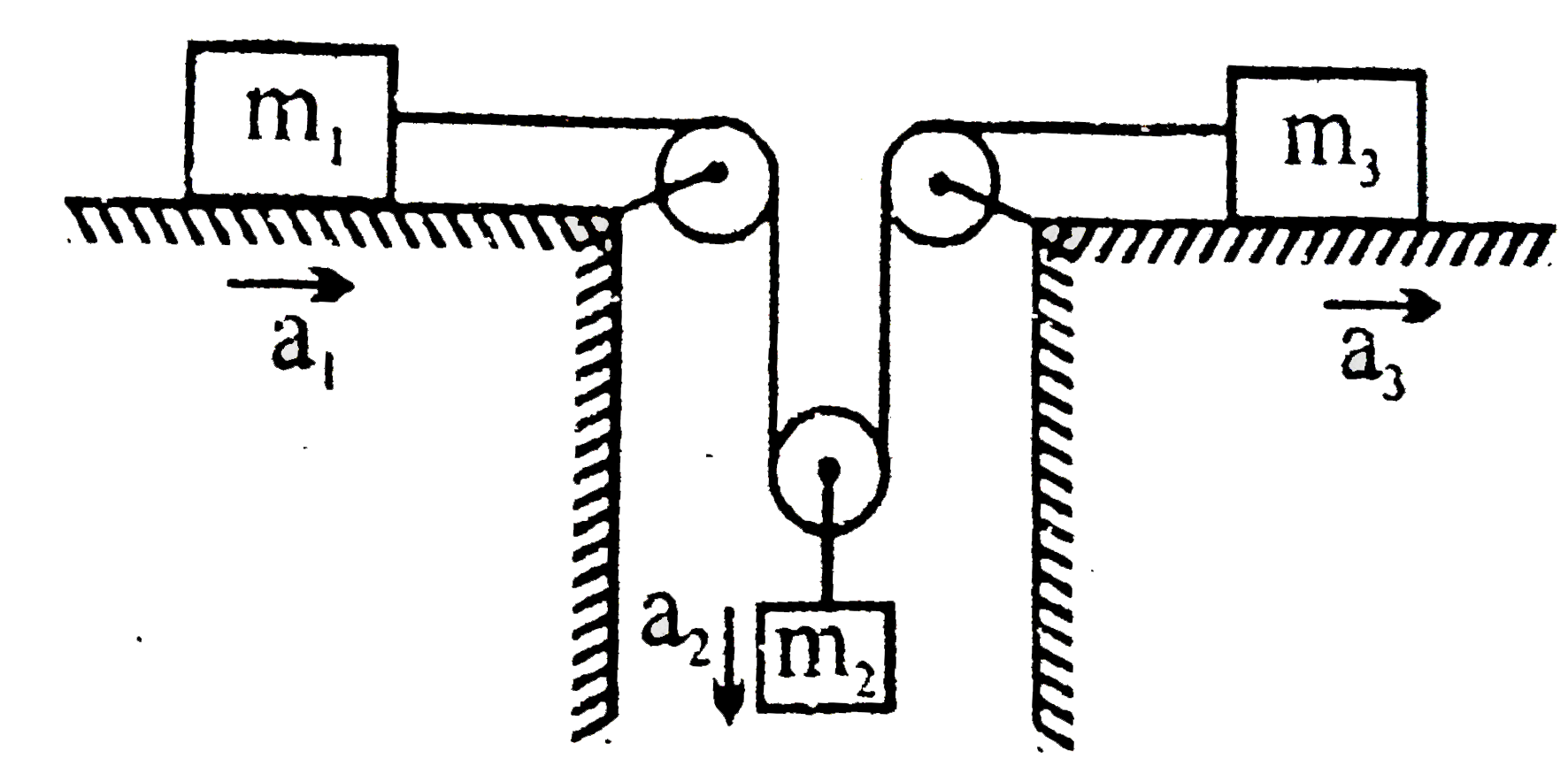
View Solution